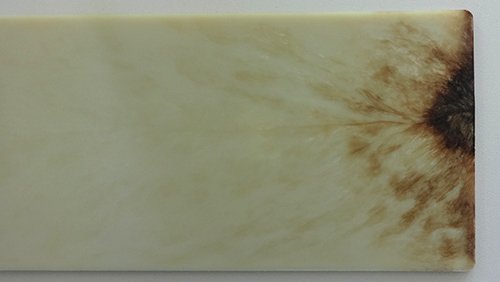Find projects
Venting of injection molding tools
Hot air or a story full of misunderstandings?
The venting of injection molds has always been a complex issue that has not yet been satisfactorily resolved. When the polymer is injected into the cavity, not only the air trapped inside is displaced. Many thermoplastics form gaseous products that enter the mold. These include, particularly, fiber-reinforced and/or flame-retardant materials and, for example, polyolefins, polycarbonates, and polyamides.
The amount of gas to be displaced in a certain time depends on a number of factors. In addition to the cavity volume and the injection speed, the component geometry is of decisive importance. Different venting solutions are required for places where melt fronts meet, obstacles are flowed around, ribs are to be filled or the end of the flow path is reached.The plastic being processed plays an substantial role as well. In addition, the available space/installation space or tempering and ejector holes as well as visual aspects must always be considered during the design implementation.
What would the perfect ventilation system look like?
In any case, it would be permanently stable, self-cleaning, burr-free, small, inexpensive and possibly retrofittable. In addition, the correct positioning of the vents is essential for their effectiveness. Today, simulation programs can already make predictions about sensible venting positions. However, there is often a discrepancy between this and reality or the filling behavior changes as a result of an implemented vent, so that the venting point also "shifts". How much gas is to be discharged during the injection phase via a specific vent is determined by its performance and design. Especially for venting gaps, the rule is: "As little as possible, as much as necessary". As a result, mould venting is mostly an iterative process with several mould optimization loops.
There are numerous venting solutions on the market and in practice that are based on gaps, porous structures, inserts, relief grinding, etc. It is difficult to predict or simulate which solution is optimal for a specific application. An important prerequisite for the evaluation of existing and the development of new venting solutions is an objective and quantifiable method that can map different combinations of component geometry, process parameters and material.
Duration: 12 month, planned start Q4/2023
Costs: approx. 10,000 € / company
Solution and results
Solution approach
- Research on venting solutions and preparation as a guide
- Definition of problematic mold/component geometries on which vents must be present
- Definition of up to five thermoplastics to be used for the tests
- Development of a modular component geometry and a mold design in which variable cavity volumes, ribs, flow obstacles, ejectors ... are included in order to map typical problem areas
- Integration of sensor technology to record melt/air pressure, temperature and, if possible, gas volume
- Continuous/long-term injection molding tests with available venting solutions
- Simulation of the geometry variants, including venting solutions, and comparison with the real (measurement) results
- Development of a recommendation for action for optimized venting simulations and implementation in the mould
- Optional: Validation of the findings through simulation and practical tests on a series tool from the group of participants
Results
At the end of the project, a procedure with corresponding test specimen geometries/cavities should be available to test and objectively evaluate venting solutions in practical injection molding tests. The evaluation should be possible for specific geometries, materials and process parameters.
A central element is the rheological injection molding simulation, into which all findings/results are incorporated in order to achieve a significantly improved prediction of critical areas to be vented. In addition to the positions of the vents, it should also be possible to estimate their required performance.
Participants receive additional added value through a prepared literature review on venting solutions, a recommendation for action and a closing event. Several people per company can take part in the "seminar" and experience all the theoretical and practical findings at first hand.
Interested?!
If you would like to take part in this exciting research project, please send a short e-mail to: c.deubel@skz.de
Your request is non-binding. I will be happy to advise you personally on the planned procedure and further details.
Did you know?!
You can claim research services for tax purposes under the Research Allowance Act!
On the website of the Federal Ministry of Finance you can find out which legal framework conditions apply. We will be happy to advise you on further funding opportunities.
Please contact us if you have any questions.
We are pleased to be able to win you over for this topic
and to take this alternative approach to contract research.
Thank you in advance for your interest!
Christian Deubel










